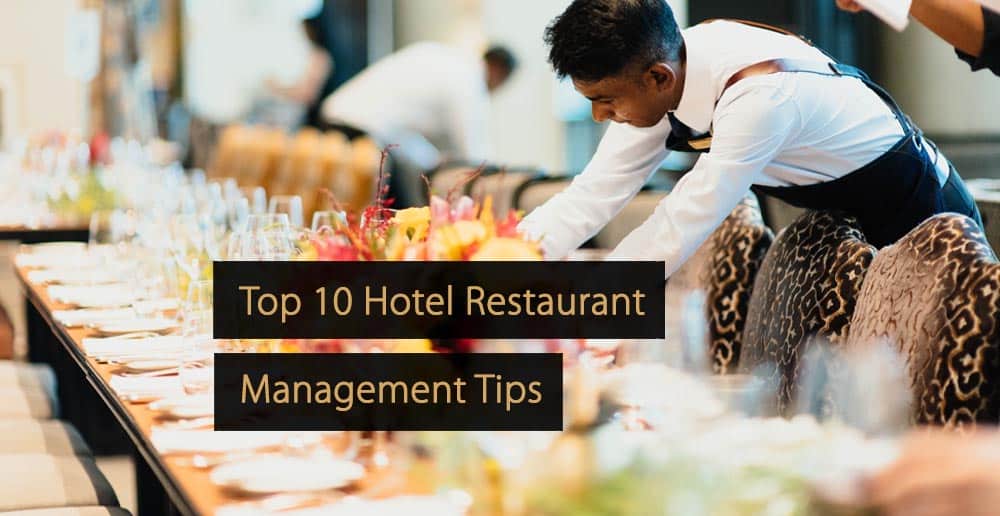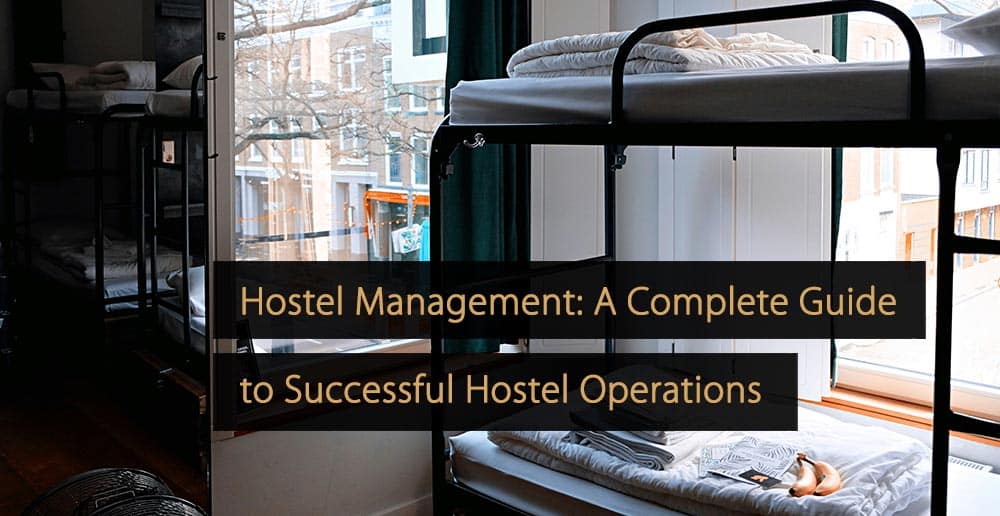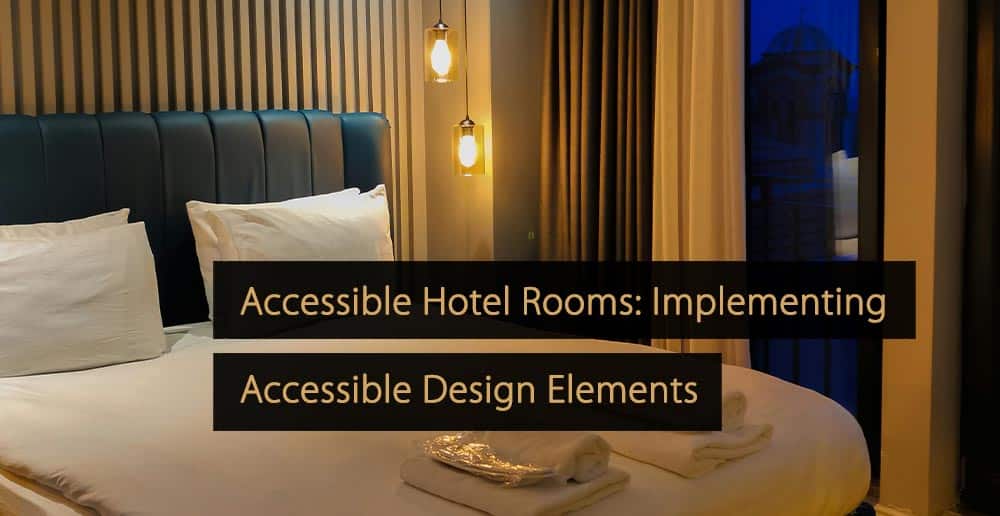When you’re from the outside looking in, running a hotel restaurant appears to be very similar to running a separate food-service business. Besides, both companies are restaurants that specialize in food and hospitality. But, the truth is, hotel and restaurant management, on the other hand, is an art form in and of itself.
A Recipe for Reaching Hotel Restaurant Management Goals
In this article, you’ll find ten hotel restaurant management tips to help you impress guests and increase efficiency. This enables you to reach your goal as a hotel restaurant manager.
You’ll learn the following:
- What distinguishes hotel restaurant management from standalone restaurant management?
- 10 Easy Hotel Restaurant Management Hints
But first, let’s take a look at what separates hotel restaurant management from individual restaurant management.
Difference Between a Hotel Restaurant Management and Standalone Restaurant Management
Hotel restaurants have all of the tasks of standalone food-service restaurants, and also a few extras, such as:
- Managing room service operations and fulfilling orders: one-third of hotel guests expect 24-hour room service.
- Serving diners from various locations, such as the dining room, lobby, or resort pool deck.
- Managing food and beverage tabs, and allowing guests to charge tabs to their rooms.
- Offering tourists what they want. Hotel guests prefer multiple dining options, late-night food and beverage (F&B) venues, and hotel restaurants that use locally sourced ingredients.
- Attractive to both locals and visitors. One in every four Americans believes that hotels should engage with locals more through their bars and restaurants. After all, when locals become regulars, they become brand loyalists for when they travel and help you maintain F&B revenue during low-season periods when room revenue is lower.
- Collaboration with hotel operations to achieve mutual business goals such as revenue generation, maintaining a high level of hospitality, competing with vacation rentals, and increasing brand awareness.
So, let’s jump into the top 10 tips to help you increase efficiency and improve your guest experience at your hotel restaurant.
10 Easy Hotel Restaurant Management Suggestions to Help You Reach Success
Hospitality and restaurant management teams are overburdened. These suggestions can assist you in streamlining operations, converting guests into brand loyalists, and increasing revenue.
1. Treat hotel Hotel guests Guests like Like VIPs
Even though all hotel restaurant guests should be treated with the same courtesy, you should make them feel like VIPs because they have already spent a significant amount of money at the property. Knowing which restaurant guests are also hotel guests is the first step in providing the star treatment. You can easily do this with a revolutionary table management system like, Eat App that conveniently integrates with your Property Management System (PMS) software.
When hotel guests check in for a table at the restaurant, this powerful tool will help you and your team recognize them as such. Your team can thank them for staying at the hotel, learn about their dining preferences, and literally roll out the red carpet.
2. Give regular Regular customers Customers and VIPs preferential Preferential Treatment
Here the same hotel restaurant management system assists you in identifying and anticipating the needs of your most loyal and important guests, such as local regulars and celebrities.
Guest profiles display preferences (such as preferred table and dietary restrictions), spending history, and other information so that every employee can accommodate – without being asked. This tool can also notify key staff members on their smartphones or other devices when a VIP arrives, allowing them to take immediate action.
When locals receive preferential treatment, they will return more frequently, carry you through the more difficult seasons, and they are more likely to be loyal to your brand when they travel.
3. Provide a Uniform Experience for Users
Delivering a consistent experience across properties and F&B outlets is important to hotel restaurant management. Your restaurant’s food service level should be comparable to the hotel’s.
So if your CRM shares data rather than silos, you can instantly know someone’s loyalty status if they’ve visited your New York property and are now visiting you in Las Vegas. When your F&B CRM integrates with your hotel CRM, data sharing can help housekeeping ensure that in-room amenities, for example, do not include nuts if the guest has a nut allergy, and anticipate other needs.
4. Make use Use of direct Direct Bookings
Direct reservations are excellent for restaurants, just as they are for hotels.
When you use a direct reservations platform, you can collect guest data so that you can own your guest relationships and market directly to customers. Furthermore, because direct booking tools do not charge a commission, your costs will be more predictable than if using an online travel agent.
5. Make Data-Driven Business Decisions
When hotel management can access data from all revenue streams, including rooms and F&B outlets, powerful reporting can be unlocked, allowing you to make the right business decision faster.
Look for an F&B CRM that allows you to access your data easily and integrates with the rest of the hotel’s tech stack, such as your POS, hotel CRM, and PMS.
6. Save Time While Maintaining Hospitality
Because of the labor shortage in the restaurant industry, you must do more with less. Look for opportunities to automate manual tasks.
Guests can order food and drinks from anywhere on the property using mobile order and pay technology, eliminating the need for a server to approach them. You can increase revenue without increasing labor costs by using this tool.
Furthermore, auto-tags in guest profiles allow you to learn more about guests without requiring staff to enter data manually.
7. Actually Listen to Feedback from Guests
Top management cannot visit every table during every shift to inquire about how their guests enjoyed their meals. Post-visit feedback surveys and online review aggregation tools allow you to monitor guest sentiment without devoting all your time.
They send you daily digests and link feedback to guest profiles, allowing you to identify fans when they walk in or make amends with a dissatisfied guest.
8. Look for Additional Ways to Extend Your Hospitality
Demand and add-on experiences broaden your hospitality while also providing opportunities to generate additional revenue. Upsells, add-ons, and experiences should be included in the booking process.
For example, you could sell tickets to a New Year’s Eve party at your hotel restaurant or allow guests to pre-order a cake for a birthday celebration.
9. Distribute the Appropriate Promotions to the Appropriate People at the Appropriate Time
Marketing is an important aspect of hospitality management. After all, you need to keep the restaurant and hotel in the minds of both visitors and locals. Targeting local restaurant guests and hotel guests with different offers is critical, but doing so manually can be difficult.
Marketing automation tools can segment these customers and use AI to send the right offer at the right time. It could, for example, send a “we miss you” email to a local restaurant two months after their last visit. Alternatively, it could send an out-of-town customer an F&B credit offer for their next hotel stay.
When you own your customer information, you can use it to drive repeat visits to every property in your portfolio through automated marketing.
10. Establish a Unique Identity for the Restaurant
A restaurant with the same name as the hotel, or worse, no name at all, will always be considered a “part” of it.
So you have two choices:
- If your business is already well-known, there is no need to change the name completely. A dedicated qualifier may be sufficient.
- Create a new brand for the restaurant. As in the barrier group that created the Fouquet brand. Today, many people who are not hotel guests eat lunch at Fouquet’s.
Free Ebook: Increase Repeat (Hotel) Restaurant Visits with Marketing Automation
Revolutionize your (hotel) restaurant’s marketing with automation. In this guide, you’ll learn how to increase repeat (hotel) restaurant visits with marketing automation and marketing automation best practices.
Click here to download the guide “Increase Repeat (Hotel) Restaurant Visits with Marketing Automation”.
More Tips to Grow Your Business
Revfine.com is the leading knowledge platform for the hospitality and travel industry. Professionals use our insights, strategies, and actionable tips to get inspired, optimize revenue, innovate processes, and improve customer experience.Explore expert advice on management, marketing, revenue management, operations, software, and technology in our dedicated Hotel, Hospitality, and Travel & Tourism categories.








Leave A Comment